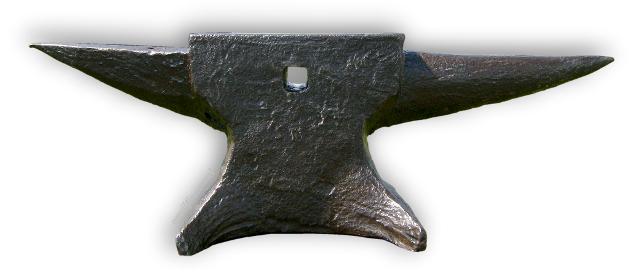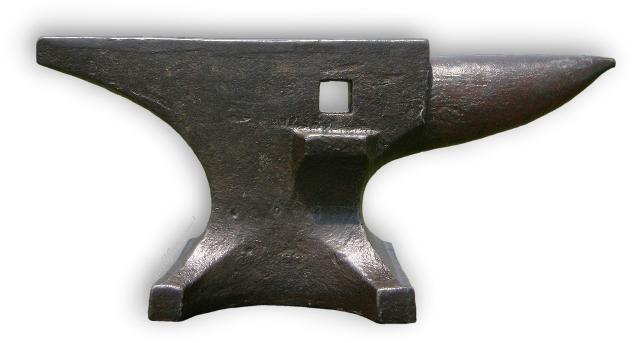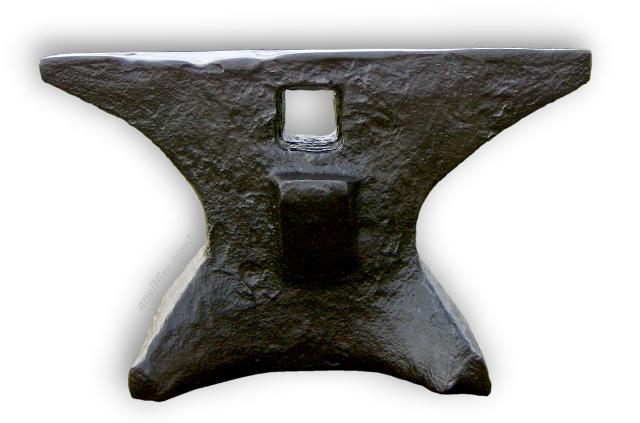Photos from the Ironsmyter Collection, PA, USA.
This first Chainmaker's anvil is a
"double arch" from the late 1700's or early 1800's.
This is similar to a hornless anvil except that it has two square "heels", each with a square hardy hole.
It is completely symetrical except for the shelf used to support the chain swages or "bickirons" which are wedged into place.

The reverse side is flat below the tooling hole.

Above is another old English double horned Chainmaker's anvil. It does not have a shelf.
This may have been made for European export but that is a guess.
The corrosion on the feet is very interesting showing the grain of the wrought iron.

This is a much later anvil from the mid 1800's to early 1900's. It could be English or Ameican made.

Chainmaking in the Black Country
A brief history of chain making and methods used in the 18th and 19th Centuries. By Ron Moss
Review with supplemental photos by Jock Dempsey

Chainmakers Anvil
Traditional anvil with chainmaking tooling hole and support.
The Lyda-Ferdinand Collection




 Return to Misc and Donated Anvils Index
Return to Misc and Donated Anvils Index



städ, incus, aambeeld, batente